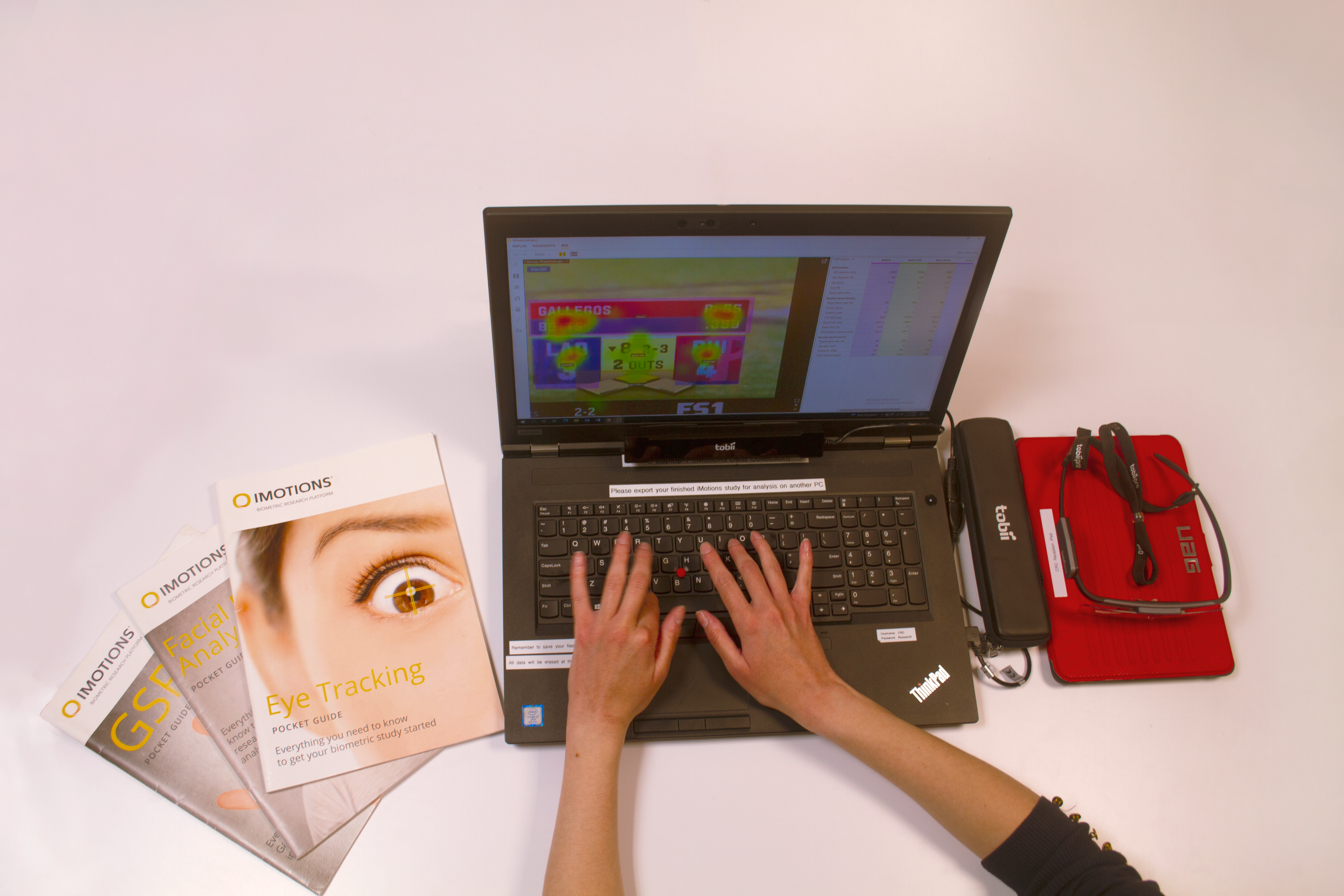Physiological Measurement in Practice with Dr. Wu
Researchers from any discipline are familiar with the question that can haunt the data collection process of an experiment: is the level of measurement used valid externally and internally? How do you know your research measurements are capturing valid data from participants?
How a researcher chooses their method of data collection can come from a multitude of factors, like the researcher’s ontological and methodological standpoints, previous literature in the field, or the study design itself. A frequent method of measuring an individual’s response is through self-report measures.
Self-report measures are quite common in the field of communication research, and can be frequently seen through the use of surveys, in-depth interviews, and focus groups. While these methods are tested and validated throughout years of research across disciplines, validity can still be a concern when using this methodology. How does a researcher know individuals are reporting their responses accurately, and aren’t saying an answer they think the researcher wants to hear, or didn’t want to make a bad impression or want to be judged by their answer? To reduce potential limitations with self-report data, leveraging physiological measures can be used in-tandem to uncover another layer of participant data.
Physiological measures can provide a different angle of data by measuring emotional and cognitive responses through a participant's biological response. Types of physiological measurement can include tracking eye movements, reading facial expressions, and gauging skin conductance- a measure that focuses on the microscopic sweat-level of the skin, noting a participant’s level of emotional response to a particular piece of media. This type of measurement can give researchers participants’ emotional and cognitive responses without social desirability or recall biases. But, like any other form of measurement, using biometric and physiological data are not without their own set of limitations. A physiological response can be caused by a variety of factors besides the chosen stimulus in a study, and may not even be a conscious act of the participant. A participant’s facial expression may change for no reason, and a sudden rise in skin conductance may be due to room temperature, or another external factor.
biological response. Types of physiological measurement can include tracking eye movements, reading facial expressions, and gauging skin conductance- a measure that focuses on the microscopic sweat-level of the skin, noting a participant’s level of emotional response to a particular piece of media. This type of measurement can give researchers participants’ emotional and cognitive responses without social desirability or recall biases. But, like any other form of measurement, using biometric and physiological data are not without their own set of limitations. A physiological response can be caused by a variety of factors besides the chosen stimulus in a study, and may not even be a conscious act of the participant. A participant’s facial expression may change for no reason, and a sudden rise in skin conductance may be due to room temperature, or another external factor.
Here at the Communication Research Center (CRC), we are equipped with physiological devices and iMotions biometric software that are used by Boston University researchers to bring reliable data on a participant’s emotional and cognitive responses. COM professor Dr. Denis Wu’s recently published 2024 article, Physiological Response to Political Advertisement: Examining the Influence of Partisan and Issue Congruence on Attention and Emotion, published in the prestigious International Journal of Communication, highlights using biometrics to uncover another side of analysis CRC’s biometric tools.
 In his article, Dr. Wu combined surveys with facial analysis and eye-tracking data to analyze participant’s emotional and cognitive reaction to US political commercials during the 2016 election cycle. By using the CRC’s eye-tracking device and iMotions biometric software, Dr. Wu was able to identify participant’s facial expressions and attention levels to political advertisements through analyzing their eye movement activity. The study found that attention to the political advertisements influenced by the level of the ad aligning to the participant's preferred political party. Dr. Wu also found that participants' facial expressions were less negative than predicted, but were never “elated”.
In his article, Dr. Wu combined surveys with facial analysis and eye-tracking data to analyze participant’s emotional and cognitive reaction to US political commercials during the 2016 election cycle. By using the CRC’s eye-tracking device and iMotions biometric software, Dr. Wu was able to identify participant’s facial expressions and attention levels to political advertisements through analyzing their eye movement activity. The study found that attention to the political advertisements influenced by the level of the ad aligning to the participant's preferred political party. Dr. Wu also found that participants' facial expressions were less negative than predicted, but were never “elated”.
Interestingly, Dr. Wu also found sections of self-report data and biometric eye tracking data were not perfectly aligned, nor self-reported emotions and facial expression data. This is an important observation, and can show that sometimes self-report measures and physiological measures can highlight different results. However, Dr. Wu makes an important observation: outside factors could be the cause of the different results, and researchers should not assume these different measures are not effective in research.
No form of measurement is without limitations, and there will always be questions of validity and accuracy when conducting research of any kind. However, combining self-report data with physiological measurements presents a deeper analysis of a participant’s reaction. The CRC is proud to have supported Dr. Wu in his recent article, and our physiological and biometric tools are used by graduate students and faculty in their research efforts. For more information on the tools available at the CRC, visit our biometrics page.
